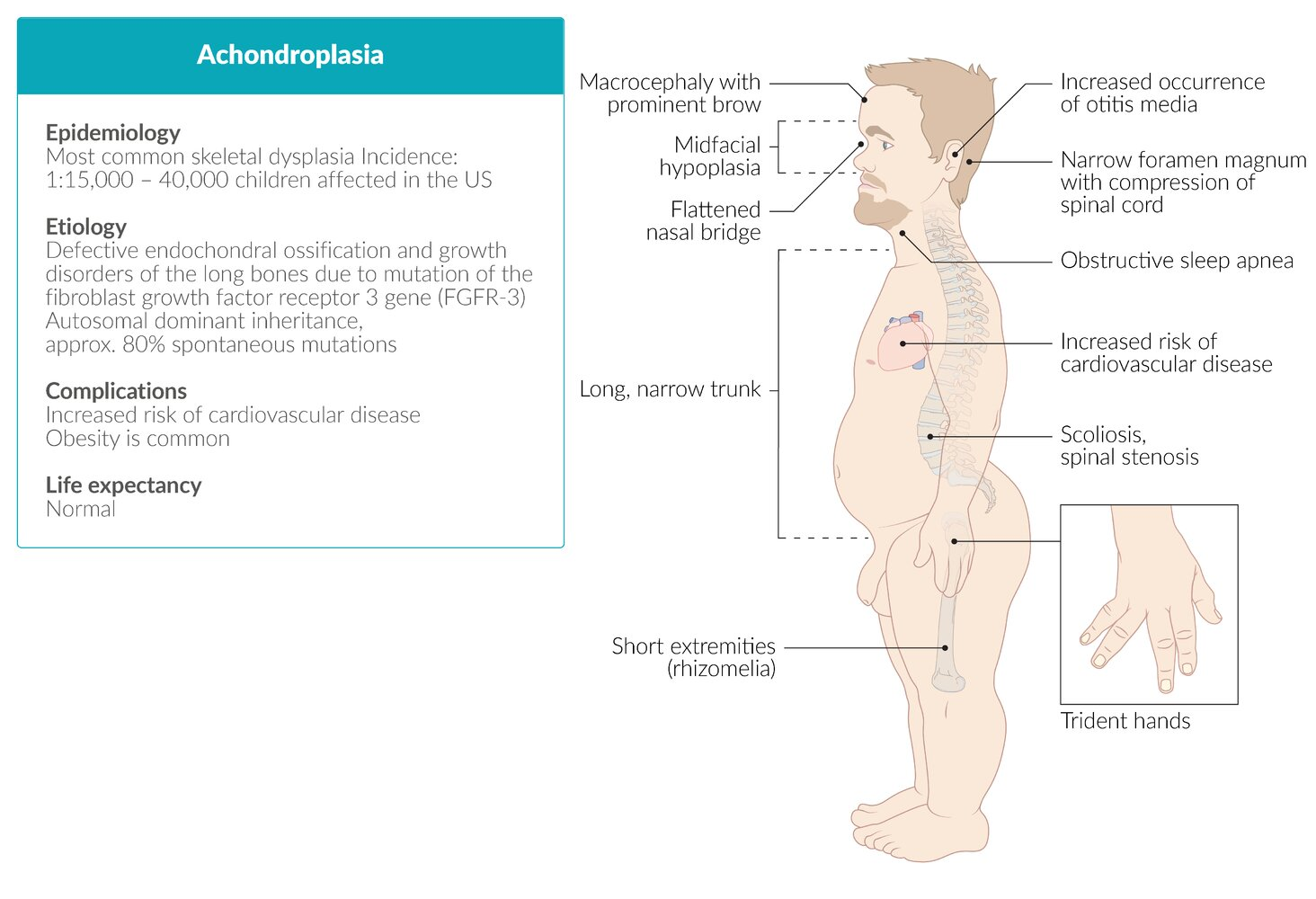Tip
Think of Tyrion!
Epidemiology
- Most common type of skeletal dysplasia
- Most common cause of disproportionate short stature
Etiology
- Gain of function mutation in fibroblast growth factor receptor 3 gene (FGFR3) on chromosome 4
Pathophysiology
- Defective FGFR3 → continuous receptor stimulation by FGF → inhibited chondrocyte proliferation → ↓ endochondral ossification → impaired longitudinal bone growth
- Normal intramembranous ossification of the craniofacial bones → disproportionately large head in relation to the limbs
Tip
GH deficiency can lead to proportional short stature (both long and flat bones affected) as opposed to the disproportionate short stature seen in achondroplasia (only long bones affected).
Clinical features
- Stature
- Disproportionate short stature
- Normal-sized torso
- Short, plump extremities
- Craniofacial abnormalities
- Middle ear deformation: recurrent otitis media
- Other skeletal abnormalities
- Small foramen magnum: compression of the cervical medulla
- Lumbar lordosis and kyphoscoliosis
- Spinal canal stenosis: lower back and leg pain, paresthesias, dysesthesia, incontinence

